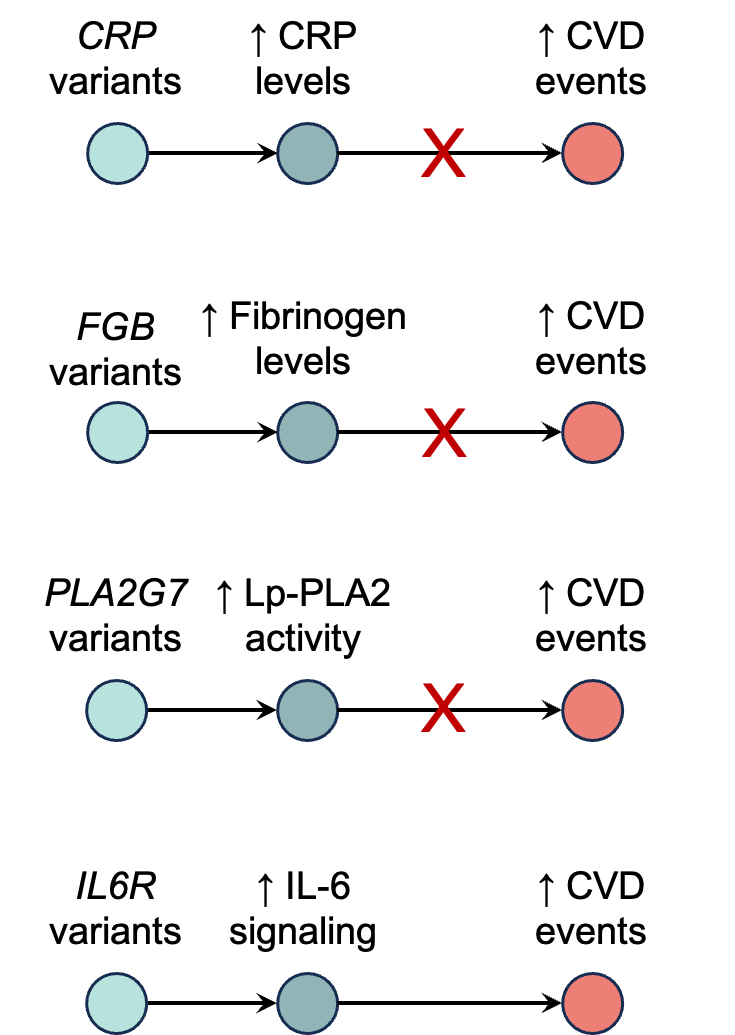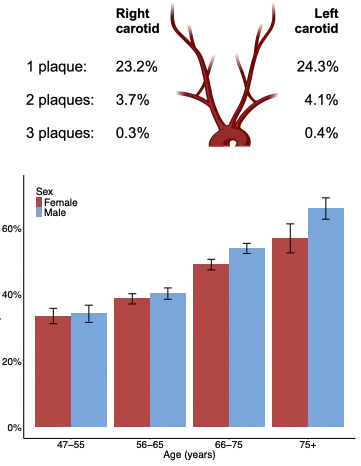Our Research
We combine genetics, multi-omics, and AI to uncover therapeutic targets and biomarkers of vascular disease
We use human genetics to identify causal drivers of vascular disease and de-risk drug development, apply multi-omics to human vascular tissue to map molecular signatures of pathology, and leverage AI-based phenotyping in large-scale cohorts to develop tools for personalized risk prediction.
Themes in our Work
-

Human genetics for drug target discovery
We explore the genetic architecture of vascular disease by linking variants to relevant traits through genomic studies. Our goal is to detect causal mechanisms and prioritize drug targets.
-

Mapping vascular pathologies with multi-omics profiling
We generate high-throughput multi-omics data from human atherosclerotic plaques collected through our AtherOMICS biobank to map the molecular changes driving vascular disease progression.
-

AI vascular phenotyping for personalized risk stratification
Using AI on large-scale population-based data, we derive early endophenotypes of vascular disease. These phenotypes serve as subclinical biomarkers and proxy traits for discovery in genetic and omics research.
Featured Projects
Our work is driven by the belief that with the right data, the right tools, and the right questions,
we can fundamentally change how vascular diseases are predicted, detected, and treated.
Identify and validate genetically supported anti-inflammatory drug targets for vascular disease
Starting from human genetics, we run several projects involving the dissection of potential drug target pathways for cardiovascular disease.
In our previous work, we have found genetic variation mimicking down-regulation of IL-6 signaling or the CCL2/CCR2 axis to be associated with multiple cardiovascular outcomes. These results point to these pathways as potential drug targets for vascular disease.
In ongoing work, we are scaling this approach to more potential targets by integrating genetic data with omics data from different sources (publicly available plasma data or in-house atherosclerotic tissue data).
Read the papers
Detect omics signatures separating symptomatic from asymptomatic atherosclerotic disease
Atherosclerosis is the most common pathology underlying cardiovascular disease. The classification of atherosclerotic disease is based on histology studies performed in the 50s and 60s.
Our goal is to provide a deeper characterization of atherosclerotic plaques using modern high-throughput molecular phenotyping with omics profiling. We use data from the in-house AtherOMICS biobank, which includes atherosclerotic plaques from patients with symptomatic or asymptomatic carotid or femoral disease.
Applying single-cell and bulk proteomic and transcriptomic analyses, we aim to detect molecular signatures associated with more aggressive plaque biology. Our results are expected to provide insights into the biology of atheroprogression, but also tools for more accurate classification of disease stage.
Read the paper
Discover early phenotypes of vascular disease in population-based cohorts
The current clinical management of vascular disease is rather reactive, focused on treatment of pathologies after the manifest themselves clinically, often with deadly consequences. However, vascular disease develops silently over decades.
We use large-scale population-based data from vascular diagnostics, including omics data, imaging, and pulse wave analyses to detect early endophenotypes of vascular pathologies. For example, we have developed AI tools that detect early atherosclerotic changes in plasma proteomics data and carotid ultrasound imaging, as well as tools that quantify arterial aging using photoplethysmography-based pulse wave curves.
These tools can be used as (i) the basis for the development of diagnostics for early detection and monitoring of vascular disease, (ii) endophenotypes for more powerful analyses into the biology of vascular disease, e.g. by exploring the genetic architecture.
Read the papers
Our Funders

Why This Work Matters
We aim to advance the understanding and treatment of vascular disease through deep, data-driven insights into human biology
We embrace the latest technologies in omics, genetics, and data science to uncover mechanisms, identify biomarkers, and discover therapeutic targets with real-world clinical impact.








